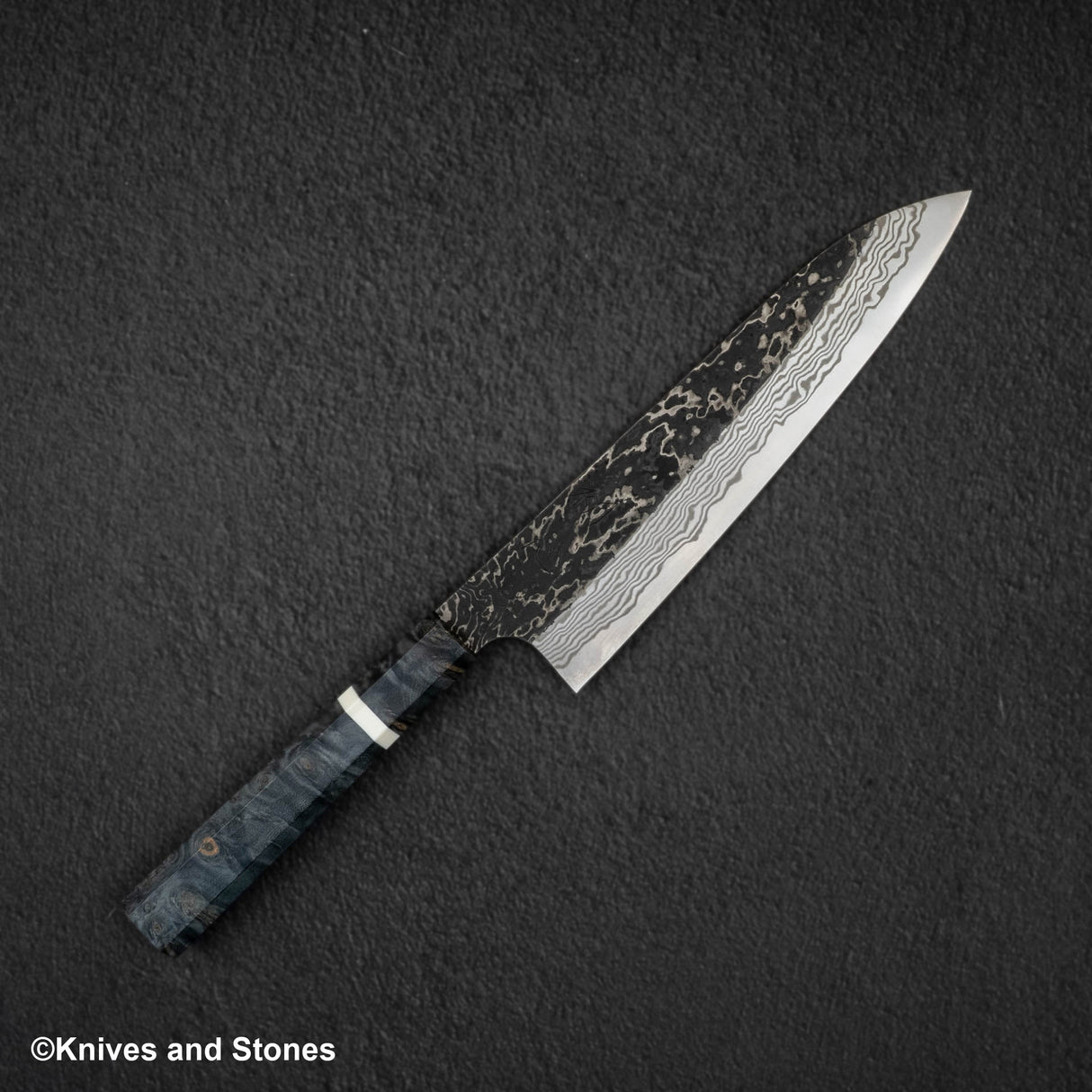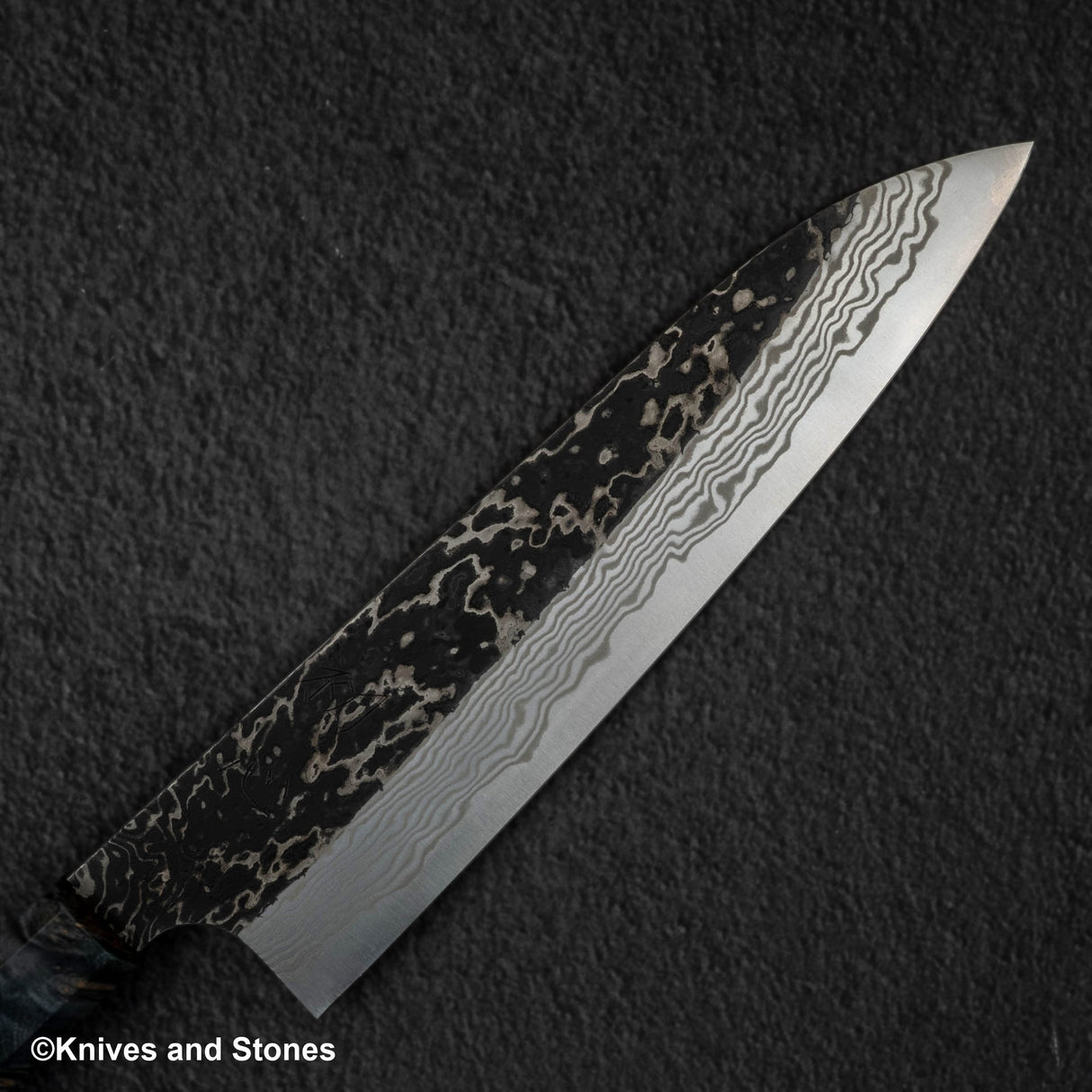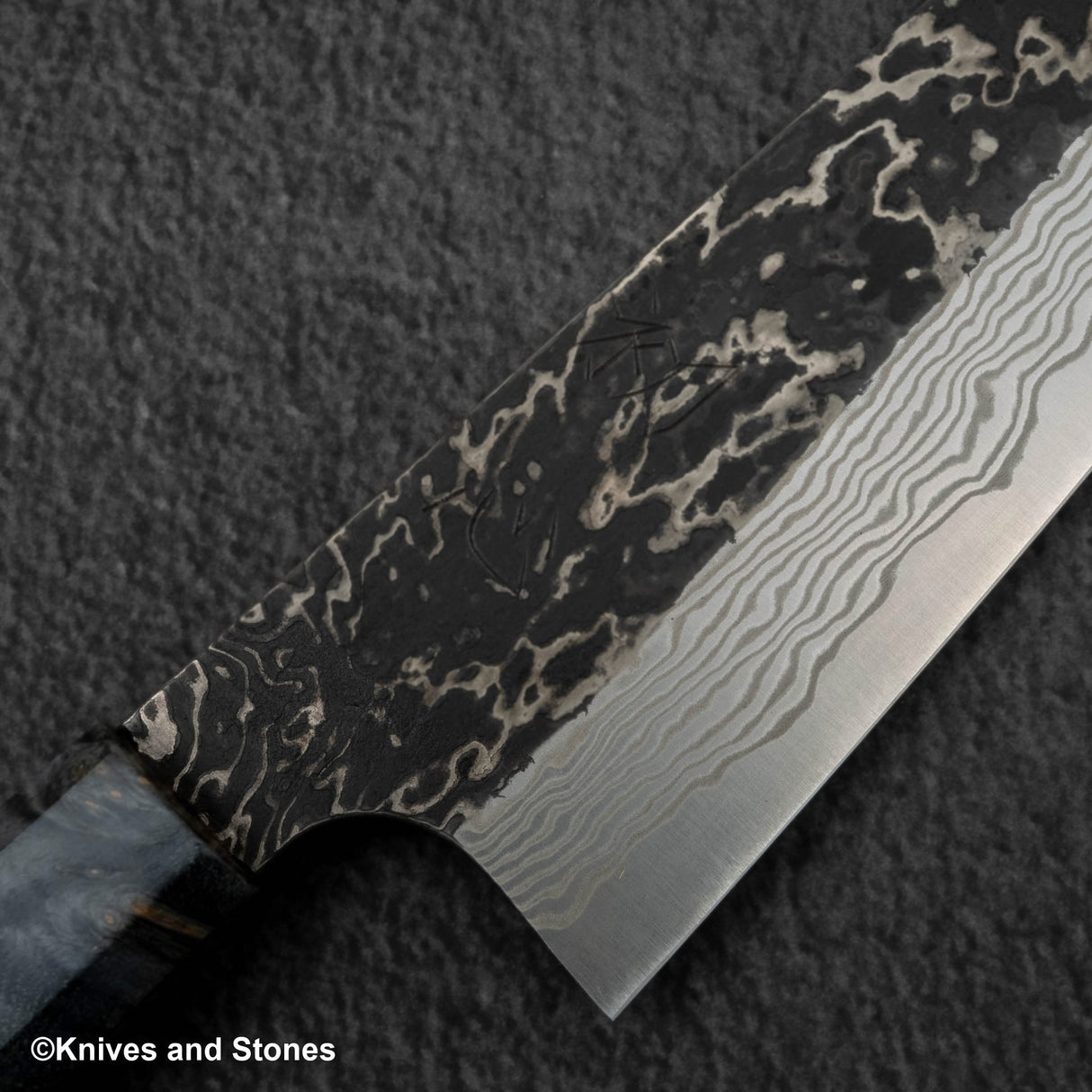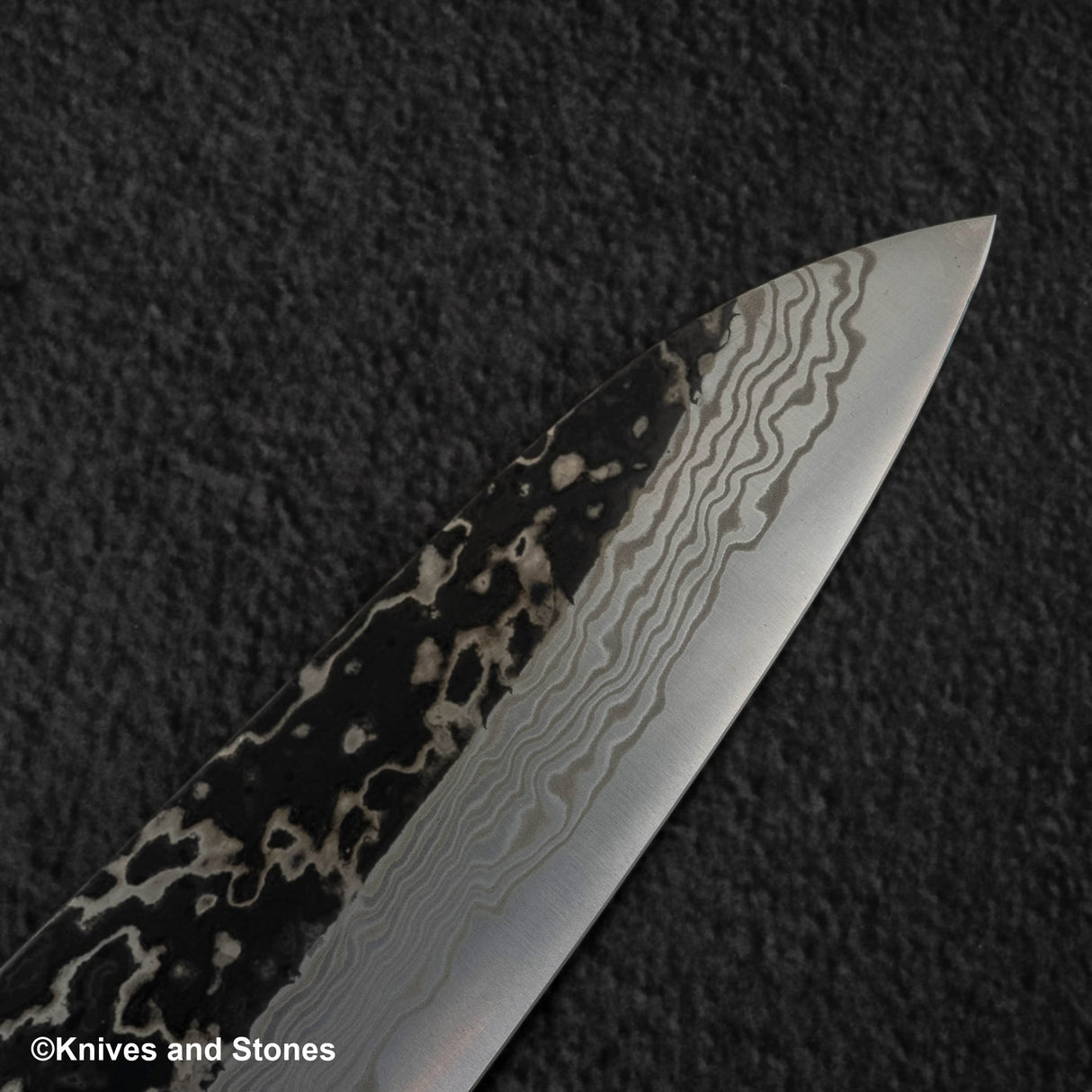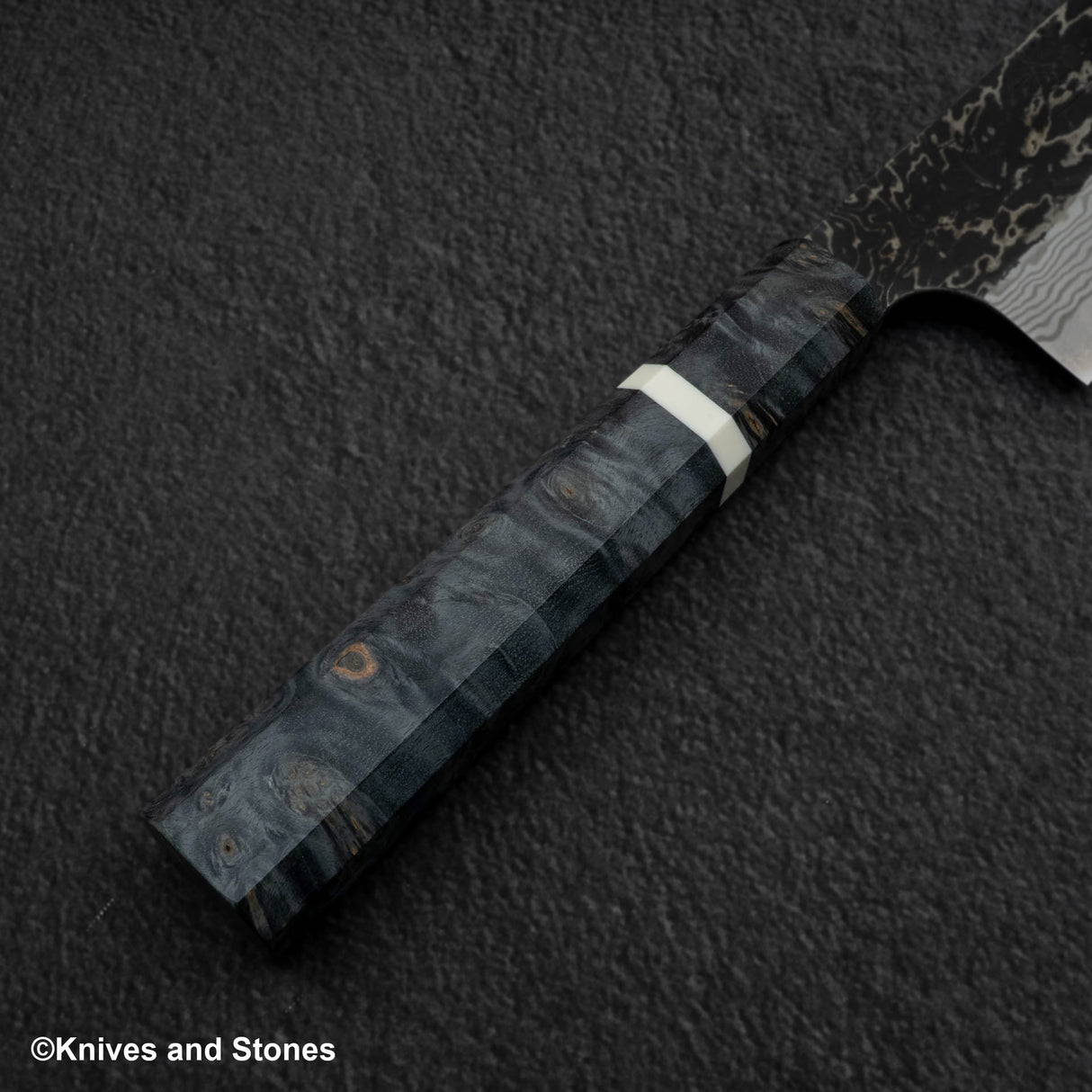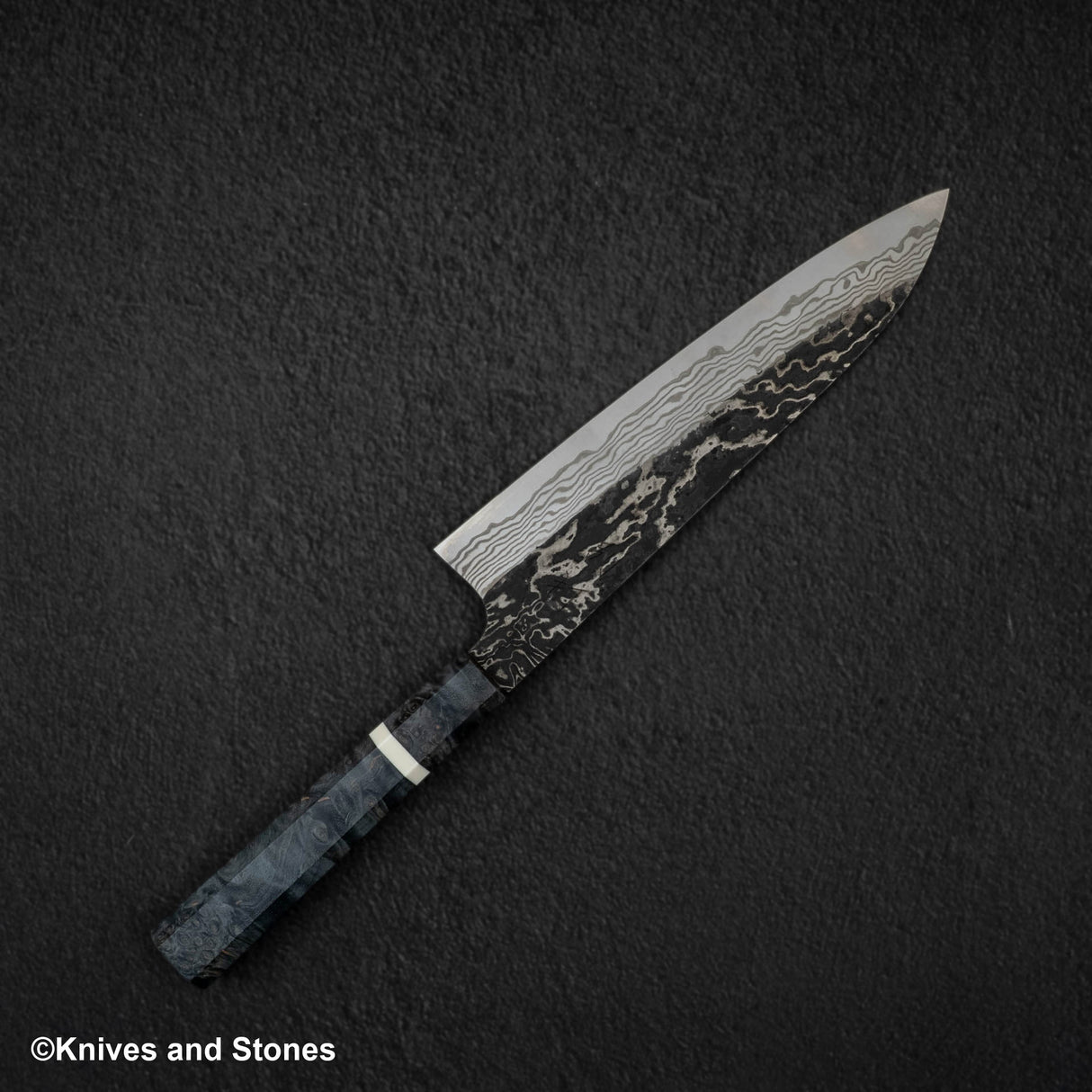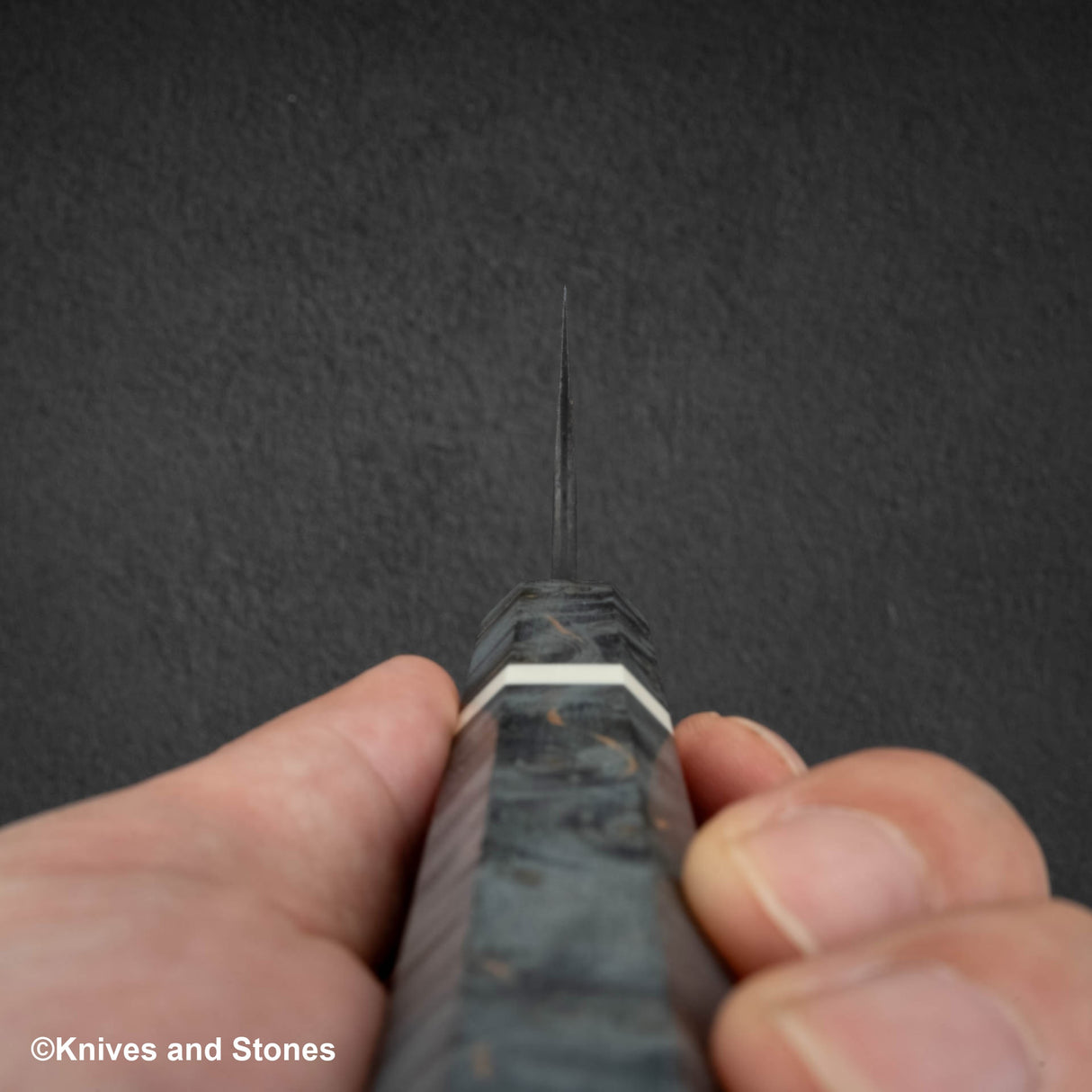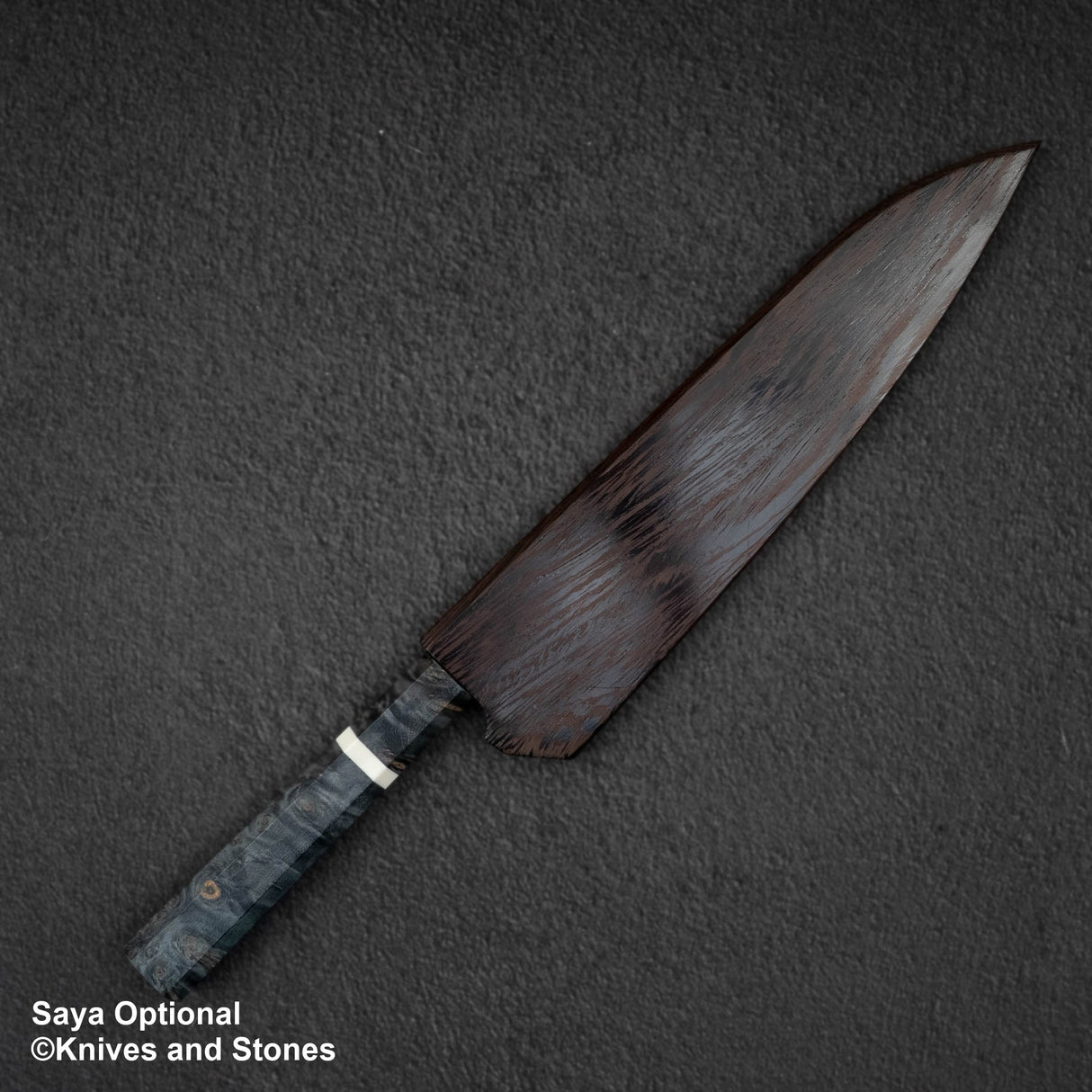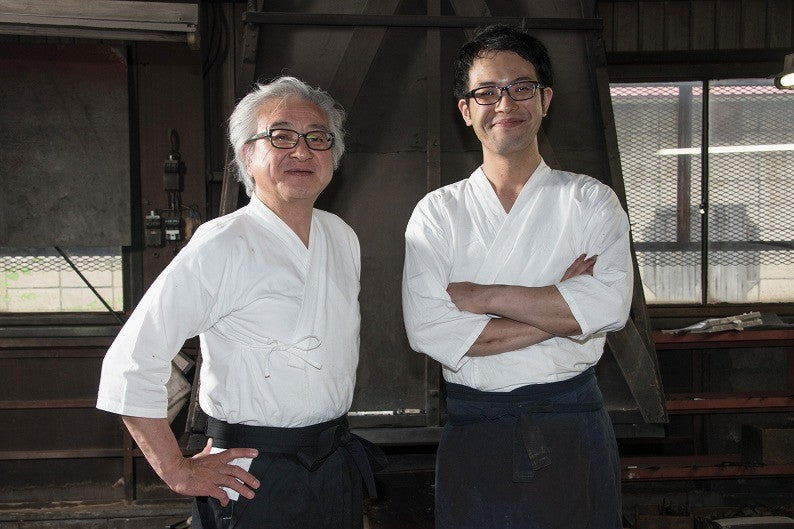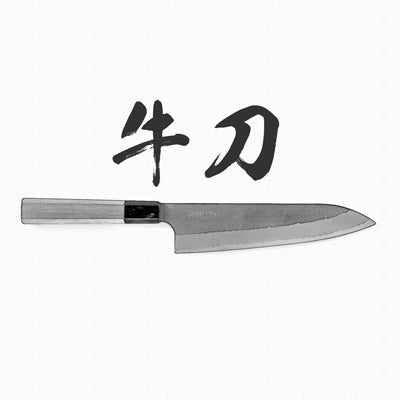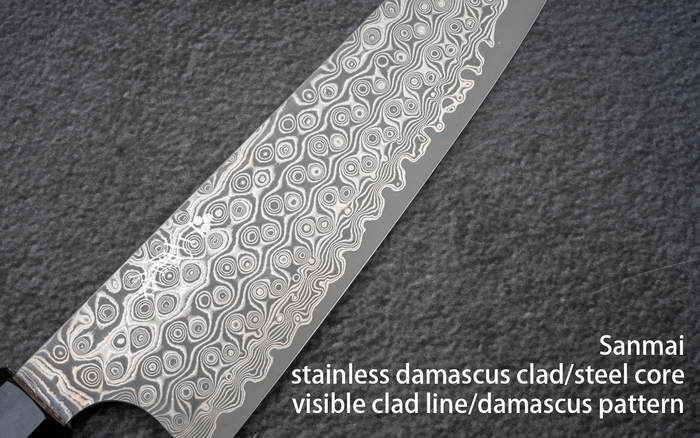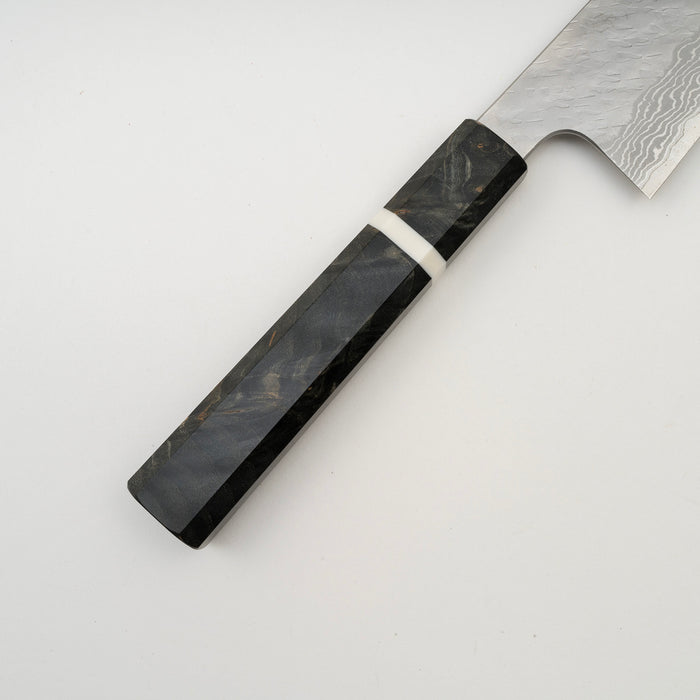Hatsukokoro | 庫存單位:
HT-YROSLDKURO-GY210BH
Hatsukokoro x Nigara Yorokobi Special SLD 黑內大馬士革牛刀 210mm 樺木手柄
售價
$16,855.00
正常價格
$19,817.00
單價
/
不可用
Hatsukokoro x Nigara Yorokobi Special SLD 黑內大馬士革牛刀 210mm 樺木手柄 已缺貨,一旦有貨就會出貨。
無法載入取貨日期
Detailed Specifications
| Line | 初心 x 二唐 SLD 喜悅特別版 |
| Profile | 牛刀 / 主廚刀 |
| Bevel Type | 雙斜面 |
| Weight | 188 g | 6.6 oz |
| Edge Length | 201 mm | 7 29/32″ |
| Heel Height | 50 mm | 1 31/32″ |
| Width @ Spine | 2.7 mm | 7/64″ |
| Width @ Mid | 2.6 mm | 7/64″ |
| Width @ 1cm from Tip | 1.0 mm | 3/64″ |
| Steel | SLD | 不鏽鋼 |
| Blade Construction | 三枚 - 不鏽鋼大馬士革夾心 |
| Hardness (HRC) | 62 - 64 |
| Surface Finish | 黑打 |
| Handle | 八角樺木瘤加間隔飾片 |
| Region | 青森 |
| Best for |
|

| Pros | Cons |
|
|
|
Care Instruction
- Don't cut hard things! Japanese knives are brittle so bone hacking is a NO NO!
- Wash with neutral detergent after use, and wipe dry;
- Please don't wash knife with dishwasher, it will damage the wood handle;
- Be careful not to leave the knife close to a heat source for a long time;
- It is a lot more dangerous to cut with a blunt knife than a sharp knife!
- It is best to sharpen a Japanese knife regularly on a waterstone. Error: Steel nature unknown

